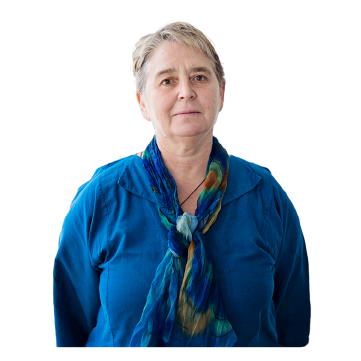
Denise Spitzer
“The doctor told me, ‘You're getting your tubes tied’. Not asking me, he told me,” says Linda, not her real name, about the reproductive violence she experienced. “When I came out of the room after I signed the paper, I didn't know what I was doing. I was young … there were môniyâwskwêwak, white women, sitting there. I asked them, ‘Did you get asked to get your tubes tied?’ ‘No.’ No? I always thought, why me?”
Linda is one of a large number of Indigenous women in Canada who cannot conceive because they were sterilized without their informed consent through the medical system.
Although no confirmed figures exist on how many women are being sterilized against their will, Indigenous experts estimate that at least 12,000 women have been affected in Canada since the 1970s.
To support survivors and facilitate their healing, University of Alberta public health professor Denise Spitzer leads a collective of Alberta researchers, community partners and international collaborators who are raising awareness about the issue of reproductive mistreatment of Indigenous, migrant, and rural poor women, not only in Alberta (and elsewhere in Canada), but in Peru and Indonesia.
Their project began in the fall of 2021 with a series of multilingual web discussions with survivors, researchers and advocates from Peru, Indonesia and Canada. In the spring and summer of 2022, in-person gatherings took place in each region, where victims came together for arts-based healing sessions called “Telling Our Stories”.
In Alberta, the sessions took place at Poundmaker’s Lodge, a residential healing centre in Edmonton, which is a critical partner in the project, says Spitzer. Survivors came together to work with an artist to create glass artwork, while Elders shared teachings and led a sweat lodge ceremony.
“It became this really beautiful intergenerational conversation,” says Spitzer, a migrant settler of Central European Jewish ancestry residing on stolen Indigenous lands. “There was a great deal of support amongst the participants.”
The project culminated in a summit at the U of A in August 2022. Thirty participants, including survivors from Alberta, Peru and Indonesia, shared their stories and their artwork, then created a quilt and collective sculpture that was, along with artwork, videos, and photographs produced through Telling Our Stories, exhibited at the Whiskeyjack Art House gallery in Edmonton.
“The main objective was to give these women the space to be heard and to be valued,” says Paulina Johnson, an assistant professor in the U of A’s sociology department and a member of the project collective.
But in a broader sense, it was important to raise awareness about the lack of respect with which Indigenous women are treated in Canada’s health-care system, which is a symptom of the systemic racism that still exists in medical care and across Canadian society, says Johnson, a member of the Samson Cree Nation.
“It’s not just about the individual woman,” she says. “All of these things have implications for families and for Indigenous communities. These messages that Indigenous women need to curb their childbearing can be incredibly hurtful, not only to the women but to their communities. We have to acknowledge that the implications are immense.”
Delia, not her real name, along with several other participants referred to forced sterilization as “genocide” against Indigenous women in their roles as life-givers of their communities – a sentiment echoed by scholars and leaders.
Spitzer recounted the story of one of the Alberta survivors who attended the events in 2022. She is a woman in her early 30s, with three children, “an amazing mother, very proud of being an Indigenous woman, and looking forward to having a large family.” Her doctor told her she could have an operation on her fallopian tubes that would be completely reversible. Once she had gone through with the procedure, she found out the procedure had been irreversible and she has been unable to conceive again.
“She’s really had a hard time dealing with this, not having had the opportunity to make an informed choice,” says Spitzer.
Carla Jamison, a community engagement officer at Poundmaker’s Lodge and a member of Blueberry River First Nations, says as a result of “atrocities” like these, there is widespread mistrust of physicians and the health-care system among Indigenous women, who are the most marginalized people in Canada.
“This is a great project,” she says. “It creates a community of women who have gone through the same thing. It transcends culture, it transcends language. It’s women saying ‘Me too. This has happened to me’.”
Funding for the project winds up this year, with a final report to follow. Once the report is published, the researchers plan to meet with leaders in health-care and medical schools to help create guidelines on contraception and informed consent.
The group has created a number of videos, available on their YouTube channel, and they are working on an infographic on contraception options, to be shared with Indigenous and migrant communities. They also hope to create a permanent art exhibit in an Indigenous space, to display the art created by the survivors from Alberta, Indonesia and Peru.
“We felt like so much love and pain and energy went into creating this work, it needs to be in a place where people can see it, people can learn from it, and where other people may be able to share their stories,” says Spitzer.
Denise Spitzer is supported by the Alberta Women’s Health Foundation through the Women and Children’s Health Research Institute.